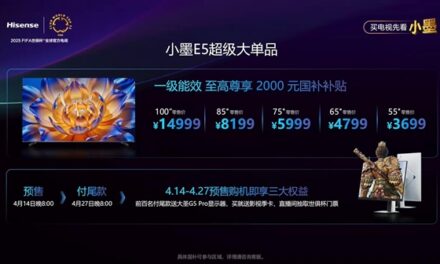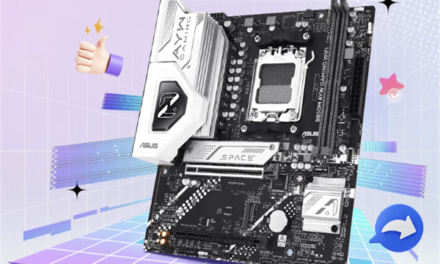
What to Look for in Fleet Monitoring Software for Your Business

Effective fleet management is paramount for companies relying on transportation to deliver goods in the fast-paced business world. Fleet monitoring software has become indispensable, offering businesses real-time insights, optimization capabilities, and enhanced control over their vehicle fleets. However, with many options available, choosing the right fleet monitoring software can be daunting. This comprehensive guide delves into the key features and considerations to help you make a better decision when selecting fleet monitoring software for your business.
Understanding Fleet Monitoring Software
Fleet monitoring software, or telematics software, is a technology solution that utilizes GPS tracking, sensors, and data analytics to monitor and manage a fleet of vehicles. The primary purpose is to provide businesses with real-time information about their cars, drivers, and overall fleet performance through fleet dash cameras and advanced tracking systems. Fleet monitoring software encompasses a range of features designed to streamline operations, enhance safety, and improve overall efficiency. These core features include GPS tracking, vehicle diagnostics, driver behavior monitoring, maintenance scheduling, and reporting capabilities.
Key Considerations When Choosing Fleet Monitoring Software
- Scalability: Consider the scalability of the software to ensure it can grow with your business. A solution accommodating an expanding fleet and additional features as your business evolves will provide a long-term and cost-effective solution.
- Ease of Use: User-friendly interfaces and intuitive navigation are crucial for successful implementation. Look for easy fleet monitoring software for your team to adopt, minimizing the learning curve and ensuring efficient utilization.
- Compatibility and Integration: Ensure that the fleet monitoring software is compatible with your existing systems and can seamlessly integrate with other software applications your business relies on. This includes compatibility with various hardware devices, operating systems, and third-party applications.
- Real-Time Tracking and Monitoring: Real-time tracking is a fundamental feature of fleet monitoring software. The ability to monitor your vehicles’ location, speed, and status in real-time provides invaluable insights into fleet activities and enhances overall control.
- Geofencing: Geofencing allows you to define virtual boundaries on a map. The system triggers alerts or notifications when a vehicle enters or exits these predefined areas. This feature is handy for monitoring unauthorized vehicle use or ensuring vehicles adhere to designated routes.
- Driver Behavior Monitoring: The software should offer tools for monitoring driver behavior, including speed, braking, acceleration, and overall driving habits. This information improves safety, helps identify areas for driver training, and improves fuel efficiency.
- Vehicle Diagnostics and Maintenance Alerts: Fleet monitoring software should provide real-time insights into vehicle health, including diagnostics, fuel consumption, and maintenance needs. Automated alerts for scheduled maintenance, potential issues, or engine faults contribute to proactive fleet management.
- Fuel Management: Efficient fuel management is critical for cost control and environmental sustainability. Look for features that monitor fuel consumption, identify fuel-wasting behaviors, and provide insights into optimizing fuel efficiency.
- Reporting and Analytics: These tools permit businesses to extract valuable insights from the data collected. Look for software that offers customizable reports, trend analysis, and key performance indicators (KPIs) relevant to your fleet’s objectives.
- Mobile Accessibility: In a mobile-driven world, having access to fleet information on the go is essential. Ensure that the fleet monitoring software provides a mobile app or even just a responsive web interface for convenient access from smartphones and tablets.
- Compliance and Regulations: Compliance with regulations and safety standards is crucial. Choose fleet monitoring software that helps your business comply with relevant laws, including electronic logging device (ELD) requirements and driver hours-of-service rules.
- Customer Support and Training: Assess the level of customer support and training the software vendor provides. A responsive support team and complete training resources contribute to a smoother implementation process and ongoing successful usage.
Benefits of Fleet Monitoring Software
Fleet monitoring software streamlines operational processes by providing real-time visibility into vehicle locations, routes, and activities. This optimization leads to more efficient dispatching, reduced downtime, and improved productivity. Monitoring driver behavior and adherence to safety protocols contributes to a safer operating environment. Fleet monitoring software helps identify unsafe driving habits, allowing for timely intervention and reducing the risk of accidents.
The insights provided by fleet monitoring software enable businesses to identify areas for cost savings. From optimizing fuel consumption and reducing maintenance costs to minimizing vehicle idle time, the software contributes to overall cost efficiency. GPS tracking and route optimization features help businesses plan more efficiently, reducing travel time, fuel consumption, and vehicle wear and tear. This results in cost savings and improved on-time delivery performance.
The software’s ability to monitor vehicle diagnostics and schedule maintenance tasks helps businesses implement proactive maintenance strategies. This reduces the likelihood of unexpected breakdowns, extends vehicle lifespan, and lowers maintenance costs. In the unfortunate event of theft or unauthorized use, fleet monitoring software facilitates the tracking and recovery of stolen vehicles. Geo-fencing and real-time tracking capabilities enhance asset protection and security.
Fleet monitoring software provides a wealth of data and analytics that empower businesses to make informed decisions. Whether it’s optimizing routes, adjusting maintenance schedules, or addressing driver behavior, data-driven insights contribute to strategic decision-making. Enhanced operational efficiency, accurate delivery tracking, and timely communication contribute to improved customer satisfaction. Meeting delivery deadlines, providing accurate ETAs, and minimizing disruptions positively impact the customer experience.
Common Challenges and How to Address Them
One common challenge during the implementation of fleet monitoring software is resistance from drivers or staff who may perceive it as intrusive. Address this by emphasizing the benefits, providing training, and involving key stakeholders in the decision-making process. As fleet monitoring software collects and stores sensitive data, concerns about data security may arise. Choose software providers prioritizing robust security measures, including encryption, secure data storage, and compliance with data protection regulations.
Integrating fleet monitoring software with existing systems can pose challenges. Prioritize software solutions that offer seamless integration or have the flexibility to adapt to your business’s specific integration requirements. With many features available, selecting the most relevant to your business goals can be challenging. Prioritize features based on your needs and consider scalability to accommodate future requirements.
Fleet monitoring software is pivotal in modernizing and optimizing fleet management for businesses of all sizes. As you embark on the journey of selecting the right software solution for your fleet, carefully consider your business objectives, scalability needs, and the specific features that align with your operational requirements. By making an informed decision and implementing fleet monitoring software effectively, you can enhance operational efficiency, improve safety, and drive overall success in your fleet management endeavors.


























